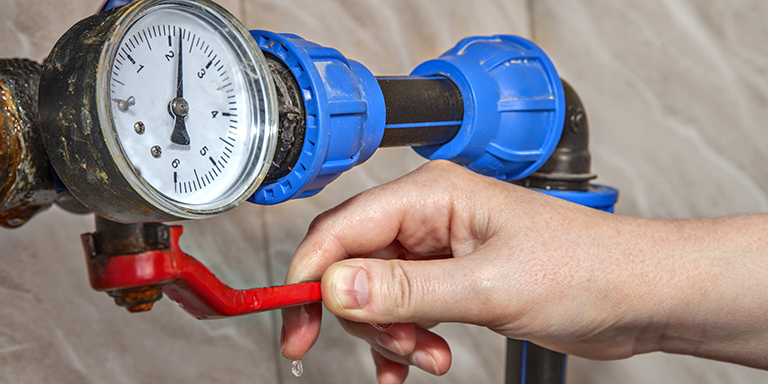In the labyrinth of systems that keep your home ticking, plumbing is the often unsung hero. It’s a system we rely on day in and day out, yet one that we tend to overlook in terms of proactive care. This blog post aims to underscore the essential practice of regularly flushing your plumbing lines—a simple, but often missed maintenance task that can save you significant money and headaches in the long run.
As simple as it may seem, plumbing lines carry out the delicate task of ensuring water flows reliably throughout your home, powering everything from shower heads to refrigerators. However, due to the nature of handling water and waste, these lines are prone to a build-up of minerals, debris, and even invasive roots which can drastically reduce the efficiency and lifespan of the system. Whether you’re a diligent DIY enthusiast or a hands-off homeowner, understanding the necessity and the methods of flushing your plumbing lines is paramount.
Benefits of Regular Flushing
The benefits of regular flushing extend far beyond the pragmatic act of removing blockages or cleaning out the muck. Here’s what you stand to gain by incorporating this simple habit into your home maintenance routine:
Prevention of Blockages and Clogs
Arguably the most tangible benefit is the prevention of blockages. Over time, debris can collect, creating a sludgy amalgamation that harbors bacteria and causes elemental distress to the flow of water. Regular flushing clears out these obstructions, ensuring your pipes remain unimpeded.
Extended Lifespan of Plumbing Systems
Just as regular exercise can increase the lifespan of the human body, so too can it benefit the intricate network of pipes in your home. When you remove sediment that, when left unattended, can wear down materials and potentially cause corrosion, you’re effectively adding years to the functionality of your plumbing system.
Improved Water Quality and Pressure
A clean system means clean water—a rather salient health consideration. While an invisible layer of filth inside your pipes might go unnoticed, its impact on water quality is undeniable. Flushing helps to maintain high water standards and also promotes optimal water pressure, a luxury that slow disciples of maintenance often overlook.
Cost Savings on Repairs and Replacements
Arguably, the most convincing argument for regular flushing is the boon to your bank account. The cost of a plumber jetting your lines pales in comparison to the financial ordeal of dealing with a burst pipe or a septic system failure. A stitch in time, as they say, saves nine, and this adage couldn’t be truer for plumbing maintenance.
Properly Flush Your Plumbing Lines in Five Easy Steps
Now that we’ve established the why, let’s delve into the how of flushing your plumbing lines:
Know Your System
Before you can begin any maintenance activity, it’s essential to understand what you’re working with. Locate and familiarize yourself with your main water shut-off valve as well as any other critical valves or components that are unique to your plumbing system.
Prepare the Area
Flushing can get messy, so it’s best to take precautions beforehand. Lay down towels or plastic sheets around any nearby surfaces that could be splashed with water or debris in the event of a leak or overflow.
Begin Flushing
Most experts recommend starting with toilets and working your way towards appliances like your water heater and washing machine. Refer to the owner’s manuals or do some research online for specific instructions on how to flush each component.
Clean Up and Maintenance
Once you’ve completed flushing, give all the affected areas a thorough clean-up to remove any residual debris or mess. This is also an excellent opportunity to inspect your pipes for damage or signs of wear and tear and address any issues before they escalate.
Schedule Regular Maintenance
Finally, to ensure the continued health of your plumbing system, schedule regular flushing at least once a year or as recommended by your plumber. This will help prevent any major blockages or damage and keep everything running smoothly for years to come.
How Often Should You Flush Your Plumbing Lines?
The frequency of flushing required can vary depending on several factors such as the size of your household, the nature of your water source, and the age of your plumbing. However, as a general benchmark, homes should consider flushing their lines every 6 months to a year. Larger households or those with older plumbing systems might find more frequent flushing beneficial, potentially even every four months. Businesses, especially those in the food service or hospitality industry, should flush their lines as frequently as every three months to avoid disruption of services.
DIY vs. Professional Flushing
The age-old debate of DIY versus professional service surfaces yet again. When it comes to flushing your plumbing lines, both avenues have their merits:
DIY Maintenance
Engaging in a DIY flush can be cost-effective and even empower you with a new skill. There is a range of home kits and solutions on the market that cater to the need for line maintenance. This hands-on approach can help you stay connected with the function of your home systems, fostering a deeper sense of stewardship towards your property.
Hiring Professional Services
On the flip side, professional plumbing services bring with them experience and equipment that often outstrip the capabilities of a home enthusiast. A seasoned plumber not only knows the telltale signs of plumbing distress but also the most efficient means of remedying it. The peace of mind that comes with a professional flush, especially for complex systems or if you’re unsure about the state of your plumbing, is invaluable.
Signs Your Plumbing Lines Need Flushing
How do you know when it’s time to flush? Your plumbing often exhibits telltale signs that it’s longing for a clean:
- Slow Drains: If your sink, shower, or tub is taking longer to empty, it’s a clear sign of blockages within the lines.
- Foul Odors: Stagnant water caused by blockages can produce odors that, though hidden within walls, can be quite pungent once they seep into your living space.
- Water Discoloration: If you notice rust or other discoloration in your water, it’s an indication of mineral build-up which can affect the water’s taste and portability.
Flushing Plumbing Lines by Bodenheimer Plumbing Services
In the grand scheme of homeownership, flushing your plumbing lines might seem like a minor task. However, the ripple effects of this simple act reach far and wide, impacting everything from your monthly bills to the structural integrity of your home. Regular maintenance might seem like an added chore, but in reality, it’s an investment in the longevity and efficiency of your living space. Make it a priority, and your plumbing will quietly thank you by ensuring life’s most essential resource flows freely and cleanly.
At Bodenheimer Plumbing Services, we understand the importance of flushing and maintaining your plumbing lines. That’s why we offer comprehensive professional services to ensure your pipes remain in top condition. From residential to commercial, our team has the expertise and tools to keep your plumbing running smoothly. Contact us today for all your plumbing needs.


